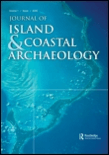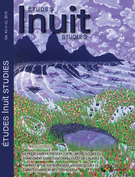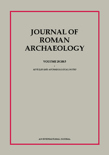
ARCHAEOLOGY IN OCEANIA
Scope & Guideline
Delving into the Archaeological Treasures of Oceania
Introduction
Aims and Scopes
- Indigenous Collaboration and Knowledge:
Promotes research that involves collaboration with Indigenous communities, ensuring that their voices and knowledge systems are integral to archaeological practice. - Cultural Heritage and Identity:
Explores the connections between archaeology and cultural identity, particularly how historical narratives shape contemporary Indigenous identities and heritage. - Zooarchaeology and Environmental Interactions:
Focuses on the study of animal remains and human-animal relationships, providing insights into past subsistence practices and ecological interactions in the Pacific. - Chronological Frameworks and Temporalities:
Investigates the construction of chronologies that integrate both Indigenous and Western temporal perspectives, facilitating a deeper understanding of historical processes. - Material Culture and Technological Practices:
Examines the production, use, and significance of material culture, including tools, pottery, and other artefacts, to understand technological change and social practices. - Place-making and Landscape Archaeology:
Studies the ways in which past societies engaged with their landscapes, including the significance of cultural sites and the narratives associated with them. - Rock Art and Symbolic Expressions:
Analyzes rock art and other forms of symbolic expression to uncover the cultural and spiritual dimensions of past societies.
Trending and Emerging
- Collaborative Archaeology:
There is a growing trend towards collaborative projects that involve Indigenous communities in the research process, recognizing their expertise and rights over cultural heritage. - Interdisciplinary Approaches:
An increasing number of papers are adopting interdisciplinary methodologies, integrating insights from anthropology, ecology, and history to provide a more comprehensive understanding of archaeological contexts. - Focus on Climate Change and Environmental Adaptation:
Recent studies are increasingly addressing how past societies adapted to environmental changes, particularly in the context of climate change, highlighting the relevance of archaeological insights for contemporary challenges. - Digital Archaeology and Data Sharing:
The use of digital tools and platforms for data collection, analysis, and sharing is on the rise, facilitating broader access to archaeological data and fostering collaborative research. - Cultural Resilience and Revitalization:
Emerging themes focus on how Indigenous cultures have maintained resilience through historical challenges, emphasizing the importance of cultural revitalization in contemporary society. - Ethnoarchaeology and Living Traditions:
There is a notable increase in studies that explore living traditions and their connections to archaeological practices, providing insights into the continuity of cultural practices over time.
Declining or Waning
- Traditional Archaeological Methodologies:
There is a noticeable decline in the publication of papers that rely solely on traditional excavation and analysis methods, as the journal increasingly emphasizes collaborative and community-based approaches. - Exclusively Western Perspectives:
Papers that focus solely on Western archaeological theories without integrating Indigenous perspectives are becoming less frequent, reflecting a broader shift towards inclusivity in the field. - Narrowly Focused Regional Studies:
Research that concentrates on very specific regional studies without broader implications or connections to wider Pacific contexts is seeing a decrease, as the journal encourages more holistic and interconnected approaches.
Similar Journals

Relaciones
Championing Open Access, Cultivating Understanding.Relaciones is a prestigious open-access journal published by the SOC ARGENTINA ANTROPOLOGIA, dedicated to the field of anthropology. Since its inception in 1937, this journal has served as a vital platform for disseminating innovative research and insights within the social sciences community. With both its print (ISSN: 0325-2221) and online (E-ISSN: 1852-1479) formats, Relaciones ensures widespread accessibility, empowering researchers, professionals, and students to engage with contemporary anthropological discourse. The journal aims to foster critical discussions that not only reflect on cultural and societal issues but also contribute to theoretical advancements in anthropological methodologies. By maintaining a commitment to quality and open access, Relaciones plays a crucial role in shaping the future of anthropology in Argentina and beyond, encouraging scholarly collaboration and enriching the academic landscape.

Boletin del Museo Chileno de Arte Precolombino
Illuminating the Artistic Legacy of Ancient CivilizationsBoletin del Museo Chileno de Arte Precolombino is a premier multidisciplinary journal published by the MUSEO CHILENO ARTE PRECOLOMBINO in Chile, dedicated to exploring the rich tapestry of pre-Columbian art and culture. With both ISSN 0716-1530 and E-ISSN 0718-6894, this Open Access journal has been providing free and immediate access to its scholarly content since 2016, making it a vital resource for researchers, professionals, and students alike. Covering diverse areas within anthropology, archaeology, and the visual arts, the journal consistently ranks in the Q1 category across multiple disciplines, illustrating its significance in fostering academic community dialogue and advances in understanding ancient cultures. As it converges from 2014 to 2024, the journal is poised to further enhance its impact, maintaining an esteemed position within Scopus rankings and reinforcing its commitment to high-quality research and scholarship in the humanities.

JOURNAL OF THE POLYNESIAN SOCIETY
Exploring the Depths of Polynesian CultureJOURNAL OF THE POLYNESIAN SOCIETY, published by Polynesian Soc Inc, is a distinguished periodical that aims to disseminate high-quality research in the fields of anthropology, archaeology, and cultural studies. With an ISSN of 0032-4000 and E-ISSN 2230-5955, this journal serves as a key resource for scholars and practitioners interested in the rich historical and cultural narratives of the Polynesian region. Since its inception, the journal has published a multitude of scholarly articles, reflecting a convergence of research from 1971 to 2022, thus establishing itself as a foundational text within its domain. The journal is indexed in notable categories with a Q4 ranking in anthropology and a Q3 in both archaeology and cultural studies as of 2023, highlighting its relevant contributions to the academic community. Moreover, its impressive Scopus ranks position it within the 80th percentile for archaeology and the 67th percentile for anthropology, showcasing its dedication to scholarly excellence. Although not an open-access publication, the journal remains a vital avenue for academic discourse and exchange, making it a significant resource for researchers, professionals, and students dedicated to understanding the diverse cultures of the Pacific Islands.

International Journal of Historical Archaeology
Exploring Connections: Bridging Historical Events and Material CultureInternational Journal of Historical Archaeology, published by SPRINGER, stands at the forefront of archaeological scholarship, focusing on the intricate relationship between historical events and archaeological findings. With an impressive impact factor underscored by its ranking in the Q1 quartiles across various categories, including Archeology and History, this journal serves as a premier platform for researchers, professionals, and students alike to disseminate groundbreaking findings and theoretical advancements in the field. Although it is not an Open Access publication, the journal provides valuable insights through its rigorous peer-review process, enhancing the quality of contributions. Covering a breadth of topics from 1997 to 2024, it is vital for advancing knowledge in historical archaeology and offers an essential resource for those invested in understanding our shared past through the lens of material culture. The journal's commitment to fostering interdisciplinary discussions enriches the scholarly community and supports the evolution of methodologies and perspectives within the domain.

California Archaeology
Bridging the Past and Present of California's ArchaeologyCalifornia Archaeology is a premier academic journal dedicated to the multifaceted study of archaeology within the context of California's rich historical and cultural landscape. Published by Routledge Journals, Taylor & Francis Ltd, this journal conveys cutting-edge research from 2009 to 2024 and is recognized for its impact in the field, with a commendable Q2 ranking in both archaeology and arts and humanities as of 2023. Scholars and practitioners are encouraged to disseminate their findings and insights through this journal, contributing to a deeper understanding of archaeological practices and interpretations in California. With access options designed to enhance the visibility of research, California Archaeology serves as an essential resource for professionals, students, and researchers devoted to advancing knowledge in archaeology, making it a cornerstone of academic discourse in the discipline.

Journal of Island & Coastal Archaeology
Advancing Archaeological Insights from Shore to ShoreThe Journal of Island & Coastal Archaeology, published by Routledge Journals, Taylor & Francis Ltd, stands as a leading publication in the fields of archaeology, ecology, and history, boasting a prestigious Q1 ranking in multiple categories as of 2023. Since its inception in 2006, this journal has been a vital resource for researchers, professionals, and students interested in the rich archaeological heritage of island and coastal regions. With an impressive Scopus ranking that places it in the top tiers of both Arts and Humanities and Social Sciences, it offers insightful studies and innovative methodologies that address the complexities of human interactions with marine and terrestrial environments. The journal aims to advance knowledge and promote discussion through rigorous peer-reviewed articles, fostering a deeper understanding of indigenous cultures and their environmental contexts. While currently not offering an open-access model, the journal remains committed to disseminating high-quality research crucial for shaping future archaeological scholarship.

Etudes Inuit Studies
Fostering Scholarly Dialogue on Inuit IssuesEtudes Inuit Studies is a prestigious academic journal published by Université Laval, Faculté des Sciences Sociales, dedicated to the in-depth exploration of Inuit cultures, languages, histories, and contemporary issues. With a significant presence in the fields of Arts and Humanities as well as Social Sciences, this journal boasts an impressive rank, placing it in the 81st percentile of general arts and humanities literature and in the top 54% of social sciences publications according to Scopus. The journal's commitment to disseminating high-quality, peer-reviewed research makes it an essential resource for researchers, professionals, and students interested in Inuit studies and related disciplines. Though it operates under a non-open access model, the rigorous scholarship presented within its pages reflects important contributions to understanding Indigenous perspectives. Covering research since its inception in 1985, and with a diverse range of topics examined until 2016, Etudes Inuit Studies remains a vital conduit for academic discourse and knowledge sharing in the realm of Inuit studies.

Journal of Roman Archaeology
Advancing Knowledge in Archaeology and ClassicsJournal of Roman Archaeology is a premier academic journal published by CAMBRIDGE UNIVERSITY PRESS, dedicated to advancing knowledge in the fields of archaeology, classics, and visual arts. With its established reputation since 2005, the journal occupies a significant place in the scholarly community, featured in the Q1 quartile in both Classics and Visual Arts & Performing Arts categories, as well as Q2 and Q3 in Archaeology, reflecting its high impact and relevance. The journal not only presents rigorous research but also fosters interdisciplinary dialogue among researchers, professionals, and students across related fields. Although it does not operate under an open access model, it provides essential insights and critical analyses that contribute to understanding Roman archaeological practices and artifacts. With an ISSN of 1047-7594 and an E-ISSN of 2331-5709, the Journal of Roman Archaeology is an indispensable resource for anyone engaged in the exploration of ancient cultures, heritage preservation, and archaeological methodologies.

Annales Instituti Archaeologici
Uncovering the Past, Shaping the Future of ArchaeologyAnnales Instituti Archaeologici is a distinguished journal published by INST ARHEOLOGIJU, dedicated to advancing research in the field of archaeology. With an ISSN of 1845-4046 and an E-ISSN of 1848-6363, this journal serves as a vital platform for the dissemination of innovative archaeological studies and findings, reflecting the evolving trends and methodologies in this fascinating discipline. Based in Croatia, the journal captures a global audience, emphasized by its Q3 ranking in both Archaeology categories as per the latest 2023 metrics, indicating a solid presence in the academic landscape. Although it does not currently offer Open Access options, its impactful contributions are recognized through its Scopus ranks, where it stands at #137/413 in Archaeology related to Arts and Humanities and #135/354 in Social Sciences. Researchers, professionals, and students interested in the latest archaeological research and its applications will find Annales Instituti Archaeologici to be an invaluable resource, promoting knowledge and fostering scholarly communication within the archaeological community.

Prilozi Instituta za Arheologiju u Zagrebu
Advancing archaeological discourse and heritage exploration.Prilozi Instituta za Arheologiju u Zagrebu is a prominent academic journal published by INST ARHEOLOGIJU, dedicated to advancing the field of archaeology and related historical studies. Operating in Croatia, this journal serves as a vital platform for scholars, researchers, and students to disseminate innovative research and insights within the realm of archaeology, with a focus on the rich cultural heritage of the region. The journal spans contributions from 2002 to 2011 and has ongoing publication since 2013, reflecting its commitment to contemporary archaeological discourse. With a growing reputation, it has achieved a Q3 ranking in the fields of Archaeology and Arts and Humanities, and a Q2 ranking in History, signifying its impact and relevance in the academic community. Although Open Access options are not available, the journal remains an essential resource for those pursuing in-depth knowledge and research in archaeology. Researchers can harness the journal's extensive scope to explore critical historical narratives and archaeological findings, solidifying its importance in both local and global contexts.